Algal blooms, those vibrant yet potentially harmful outbreaks of algae in bodies of water, have become an increasingly prevalent issue worldwide.
As these blooms can detrimentally impact aquatic ecosystems and even pose risks to human health, finding effective solutions to control them is vital.
One such approach lies in the use of algaecides chemical agents designed specifically to combat excessive algal growth.
However, not all algaecides are created equal; they come in various forms and employ different mechanisms to curb the proliferation of algae.
In this article, we will explore the diverse types of algaecides available and delve into how each one works to combat algal bloom, ultimately shedding light on the importance of understanding these options for successful bloom management strategies.
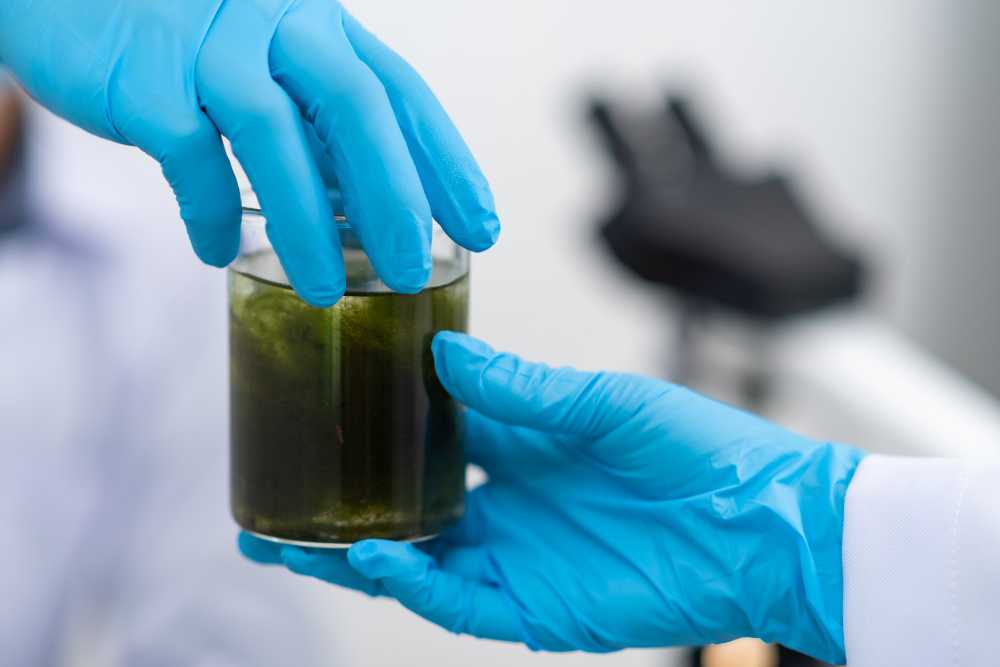
Algae and Algal Bloom
Algae are simple, photosynthetic organisms that belong to the kingdom Plantae. They are mainly aquatic and can be found in various water bodies, including oceans, lakes, ponds, and rivers.
Algae can vary in size and shape, ranging from tiny single-celled organisms to large, multicellular seaweeds.
While some level of algae is normal and even beneficial to aquatic ecosystems, excessive algae growth can lead to several problems, making algaecides an important tool in maintaining a balanced aquatic environment.
Algal bloom, on the other hand, refers to a rapid and excessive growth of algae in a water body. When conditions such as warm temperatures, sunlight, and nutrient-rich waters (e.g., nitrogen and phosphorus) are favorable, algae can experience rapid reproduction, leading to a sudden increase in their population.
This excess growth can cause the water to turn green, brown, or red, depending on the type of algae present.
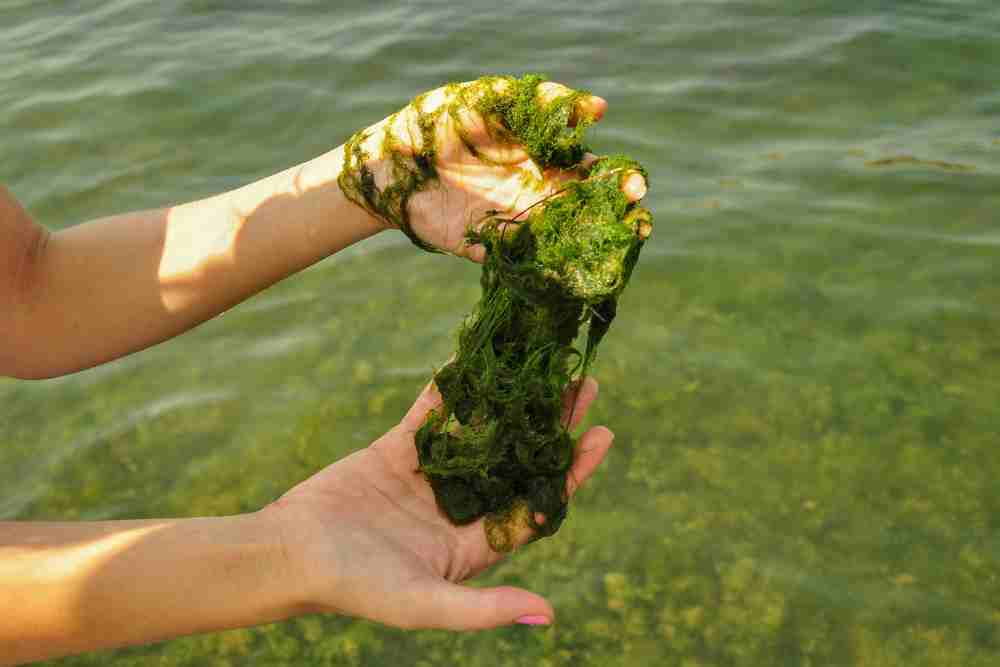
While algal blooms are a natural occurrence, human activities such as agricultural runoff, wastewater discharge, and industrial pollution can exacerbate the problem by introducing excessive nutrients into the water.
These nutrient-enriched conditions promote more frequent and intense algal blooms, which can have detrimental effects on aquatic ecosystems.
What are the Uses of Algicides?
Some of the key reasons why algaecides are essential in pond and lake management are given below:
1. Controlling Algal Blooms
The blooms can cause the water to become green or brown, reducing its aesthetic appeal and clarity. Large algal blooms can also deplete dissolved oxygen levels, which can harm fish and other aquatic organisms, leading to fish kills.
2. Restoring Oxygen Levels
As algae grow and die, they undergo a process called decomposition, which consumes dissolved oxygen in the water. When algal blooms are significant, the oxygen depletion can become severe, leading to hypoxic or anoxic conditions.
Algaecides can help prevent excessive algae growth, thus preserving oxygen levels and promoting a healthier ecosystem.
3. Enhancing Water Clarity
Algae can make the water appear murky due to their suspended particles and pigments.
By controlling algae populations, algaecides contribute to improving water clarity, which is not only aesthetically pleasing but also essential for supporting aquatic life and recreational activities.
4. Balancing Ecosystem
In an aquatic ecosystem, algae serve as a vital food source for many organisms. However, excessive algae can disrupt the natural balance, leading to an overabundance of certain species and the decline of others.
Algaecides help maintain a healthier balance among different organisms, promoting biodiversity.
5. Supporting Recreational Activities
Ponds and lakes are often used for various recreational activities, such as swimming, fishing, and boating.
Excessive algae growth can hinder these activities and also pose health risks to humans. Algaecides can create a safer environment for recreational use.
6. Eutrophication Prevention
Excessive algae growth is often linked to an excess of nutrients, such as nitrogen and phosphorus, in the water (eutrophication).
These nutrients can come from various sources, including agricultural runoff and sewage discharge. Algaecides can help control algae and prevent the worsening of eutrophication.
Types of Algaecides
Several types of algaecides are commonly used to manage algal blooms in ponds and lakes. The three main categories are copper-based algaecides, peroxygen-based algaecides, and herbicidal algaecides.
1. Copper-based algaecides
These algaecides contain copper compounds that disrupt algal cell membranes, leading to cell lysis and subsequent reduction in algal populations.
Copper sulfate and copper chelates are widely used in Bangladesh due to their affordability and effectiveness against different types of algae.
2. Peroxygen-based algaecides
Peroxygen-based algaecides, such as hydrogen peroxide and potassium permanganate, release oxygen when applied to the water.
This increase in oxygen levels helps control algal growth by promoting aerobic conditions that are unfavorable for algae.
3. Herbicidal algaecides
Herbicides specifically target unwanted plant growth, including algae. Commonly used herbicidal algaecides include diquat dibromide and endothall. These algaecides inhibit photosynthesis in algae, leading to their decline.
Besides the aforementioned types, some commonly used algaecides in pond and lake management include:
Copper sulfate: Copper sulfate is one of the most widely used algaecides for controlling various types of algae in ponds and lakes. It is effective against both planktonic (floating) and filamentous (string-like) algae. Copper sulfate is relatively affordable and easy to apply.
Chelated copper compounds: These are copper-based algaecides that are chemically modified to reduce the toxicity of copper to fish and other non-target organisms while retaining algicidal effectiveness.
Diquat: Diquat is a herbicide that is also used as an algaecide. It is effective against both algae and submerged aquatic plants. Diquat works by disrupting photosynthesis in these organisms.
Algaecide and herbicide blends: Some products combine algaecides with herbicides to target a broader range of aquatic plants and algae. These blends can be effective for managing various types of algae and unwanted vegetation in ponds.
Peroxide-based algaecides: Hydrogen peroxide and other peroxide-based products can be used as algaecides in ponds. They release oxygen when they decompose, which can help improve dissolved oxygen levels in the water.
Potassium permanganate: This chemical can be used as an algaecide and also to control certain aquatic plants. It works by oxidizing and breaking down organic matter, including algae.
Algaecides For Ponds and Lake
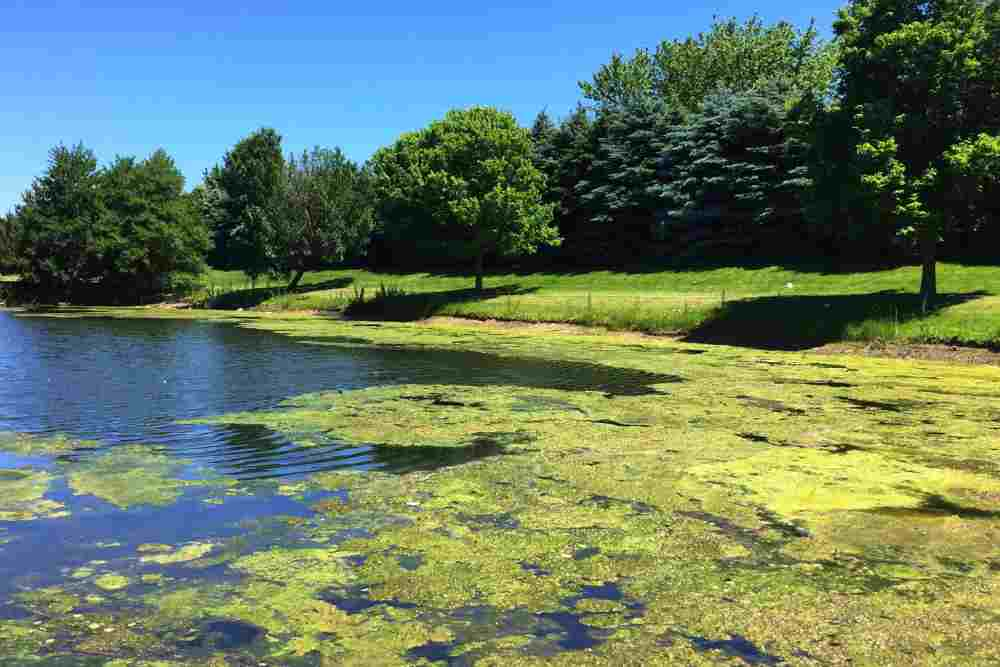
Here are some examples of commercially available algaecides (trade names) and their generic names,
Trade Name: Copper Sulfate
Generic Name: Copper sulfate or Copper-based algaecide
Dosage: The recommended dosage of copper sulfate can vary based on the severity of algae growth and the size of the water body. Generally, it is applied at rates of 0.2 to 1.0 ppm (parts per million) of elemental copper.
Trade Name: Blue Lagoon Algae Remover
Generic Name: Sodium carbonate peroxyhydrate (peroxide-based algaecide)
Dosage: The dosage of Blue Lagoon Algae Remover can vary depending on the product formulation and the specific algae species being targeted.
Trade Name: Algae Clear Ultra
Generic Name: Polymers and activated peroxide (peroxide-based algaecide)
Dosage: Dosage instructions for AlgaeClear Ultra should be obtained from the product label or the manufacturer’s guidelines.
Trade Name: Aquathol Super K
Generic Name: Endothall (herbicide and algaecide)
Dosage: The dosage of Aquathol Super K varies depending on the targeted algae and the size of the water body. Follow the manufacturer’s guidelines for proper application rates.
Trade Name: Cutrine Plus Granular
Generic Name: Copper sulfate or Copper-based algaecide
Dosage: The application rate of Cutrine Plus Granular typically ranges from 3 to 60 lbs per acre-foot of water, depending on the algae species and the severity of the infestation.
Trade Name: Mizzen
Generic Name: Chelated copper compounds (copper-based algaecide)
Dosage: The dosage of Mizzen can vary depending on the product formulation and the specific algae species being treated. Follow the manufacturer’s instructions for application rates.
Trade Name: GreenClean Pro
Generic Name: Sodium carbonate peroxyhydrate (peroxide-based algaecide)
Dosage: Dosage instructions for GreenClean Pro should be obtained from the product label or the manufacturer’s guidelines.
Trade Name: Reward Landscape and Aquatic Herbicide
Generic Name: Diquat dibromide (herbicide and algaecide)
Dosage: The dosage of Reward Landscape and Aquatic Herbicide can vary depending on the specific algae species and the size of the water body.
Follow the manufacturer’s guidelines for proper application rates.
The dosages mentioned above are general guidelines and may not be suitable for all situations.
Algaecides for Pools
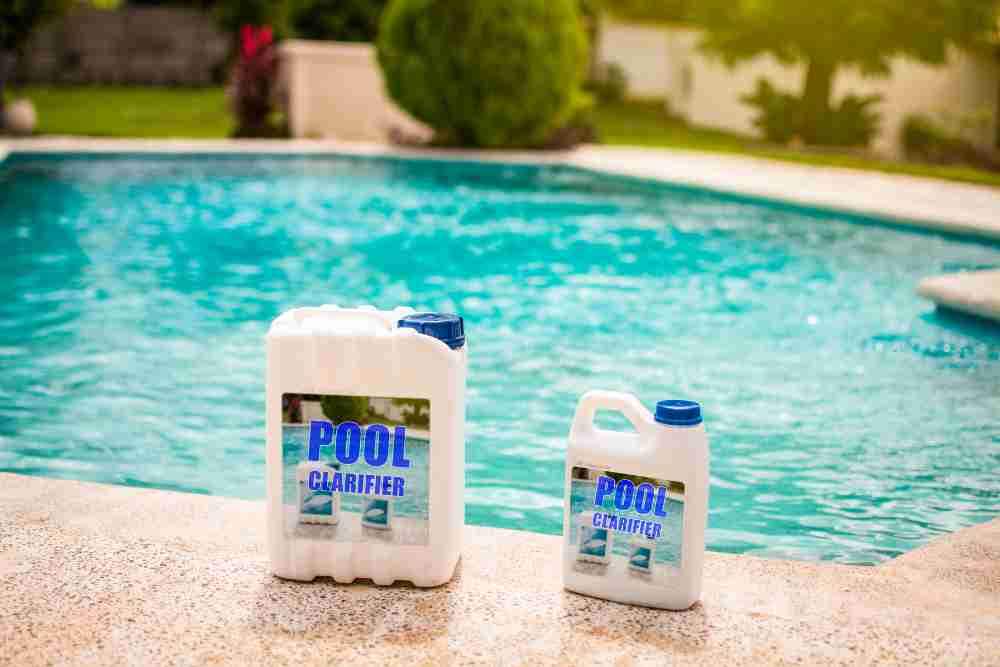
There are different types of algaecides available for pool treatment, and they work by either killing existing algae or preventing new algae growth.
Some common types of algaecides used for pools include:
- Copper-based algaecides: These algaecides contain copper sulfate or copper chelates as the active ingredient. Examples include:
- CuLator Metal Eliminator and Stain Preventer
- Leisure Time Spa & Hot Tub Algaecide
- In The Swim Super Pool Algaecide
- Quaternary Ammonium-based algaecides: These algaecides contain quaternary ammonium compounds. Examples include:
- PoolRX Algaecide Unit
- Kem-Tek 60% Concentrate Algaecide
- Robelle Super Algaecide
- Polyquat-based algaecides: These algaecides use polyquaternium compounds as the active ingredient. Examples include:
- SeaKlear 90-Day Algae Prevention & Remover
- Leslie’s Algae Control Poly 60
- GLB Algimycin 600 Pool Algaecide
- Silver-based algaecides: These algaecides use silver ions to control algae growth. Examples include:
- PoolRX 7.5K to 20K Gallons Unit
- Natural Chemistry Pool Perfect + PHOSfree
- United Chemical No Mor Problems
How Does Algae Control Work | Mode of Actions of Algaecides & Herbicides
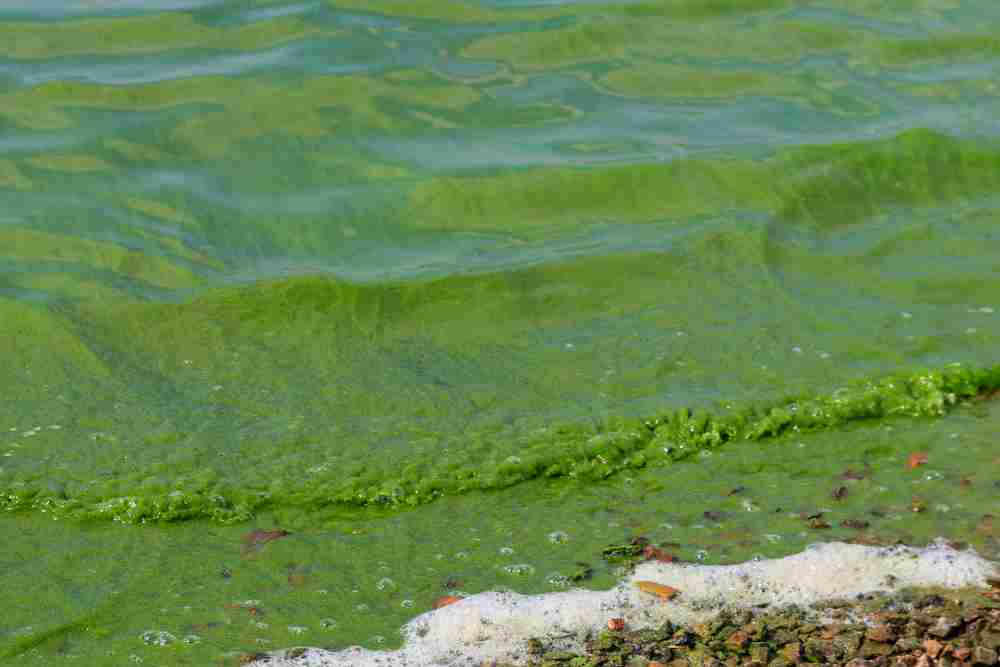
The working mechanism of algaecides involves disrupting the normal biological and physiological processes of algae, leading to their growth inhibition or death.
Different types of algaecides may have varying mechanisms of action, but their ultimate goal is to control and manage algae populations in aquatic environments.
Some common working mechanisms of algaecides are described below:
1. Cell Membrane Disruption
Some algaecides work by damaging the cell membranes of algae. The cell membrane is a vital barrier that regulates the movement of substances in and out of the cell.
When the cell membrane is disrupted, essential functions within the cell are compromised, leading to cell death.
2. Photosynthesis Inhibition
Photosynthesis is the process by which algae convert light energy into chemical energy for growth.
Algaecides can target the photosynthetic machinery of algae, disrupting the production of energy and other essential compounds.
Without adequate energy production, the algae cannot grow and may die off.
3. Oxidation
Peroxide-based algaecides work by releasing oxygen radicals upon contact with algae.
These radicals cause oxidative stress within the algae, damaging their cellular structures and inhibiting growth.
4. Nutrient Deprivation
Some algaecides act indirectly by removing essential nutrients from the water that algae require for growth, such as phosphorus or nitrogen.
By reducing nutrient availability, the growth of algae is limited.
5. Protein Denaturation
Certain algaecides can denature or disrupt proteins within algae cells.
Proteins are essential for various cellular functions, and their disruption can lead to cellular dysfunction and eventual death of the algae.
6. Cell Division Inhibition
Algaecides may interfere with the normal process of cell division in algae, preventing their reproduction and population growth.
7. Chelation of Essential Metals
Chelated copper algaecides work by binding to essential metals in algae cells, such as copper ions.
This disrupts enzyme activity and other biochemical processes within the cells, leading to algae control.
Environmental Considerations During the Use of Algaecides
Using algaecides for pond and lake management can have environmental considerations that should be carefully evaluated to ensure responsible and sustainable practices.
Some of the key environmental considerations include:
Non-Target Organisms
Algaecides may not only target algae but can also affect other non-target organisms in the water. Fish, invertebrates, and beneficial microorganisms may be impacted by algaecide applications, leading to unintended consequences on the overall ecosystem.
Water Quality
Algaecides can alter water quality parameters, such as pH and dissolved oxygen levels. Excessive algaecide use or improper application can lead to water quality issues, which may further stress aquatic life and impact ecosystem health.
Residue Accumulation
Some algaecides can leave residues in the water even after their initial application. These residues may persist and continue to affect aquatic organisms and water quality over time.
Toxicity to Wildlife
Algaecides may be toxic to birds, amphibians, and other wildlife that come into contact with treated water bodies or consume contaminated prey.
Resistance and Resilience
Frequent or overuse of algaecides can lead to the development of algae populations that are resistant to the chemical treatments. This resistance can make future algae control efforts more challenging.
Nutrient Release
When algae die after algaecide treatments, they can release nutrients back into the water, potentially fueling another round of algal blooms.
Regulatory Compliance
The use of algaecides in water bodies may be subject to local and national regulations. Complying with these regulations is crucial to avoid legal issues and ensure environmentally responsible practices.
To address these environmental considerations, it’s essential to adopt an integrated approach to pond and lake management. This approach may include:
Water Quality Monitoring
Regular monitoring of water quality parameters can help assess the impact of algaecide applications and guide management decisions.
Targeted Application
Applying algaecides only when necessary and targeting specific areas of excessive algae growth can minimize their impact on non-target organisms.
Dosage Management
Using algaecides at appropriate dosages as recommended by manufacturers and experts can help reduce potential adverse effects.
Mechanical and Biological Controls
Implementing non-chemical control methods, such as aeration, nutrient management, and the use of beneficial bacteria or algae-eating organisms, can complement algaecide use and promote a more balanced ecosystem.
Environmental Risk Assessment
Conducting thorough environmental risk assessments before using algaecides can help identify potential risks and determine the best course of action.
Public Education
Educating the public, including pond owners and stakeholders, about the environmental impacts of algaecides and the importance of responsible management practices can foster better decision-making.
What Are the Disadvantages of Algaecides?
Some disadvantages of algaecides include:
- Potential harm to aquatic life, especially fish and other sensitive organisms.
- Risk of chemical imbalances in the water if overused.
- Environmental concerns if algaecides leach into natural water bodies.
- The need for repeated applications if algae growth persists.
- Some algaecides may cause skin irritation if handled improperly.
How To Control Algae Naturally?
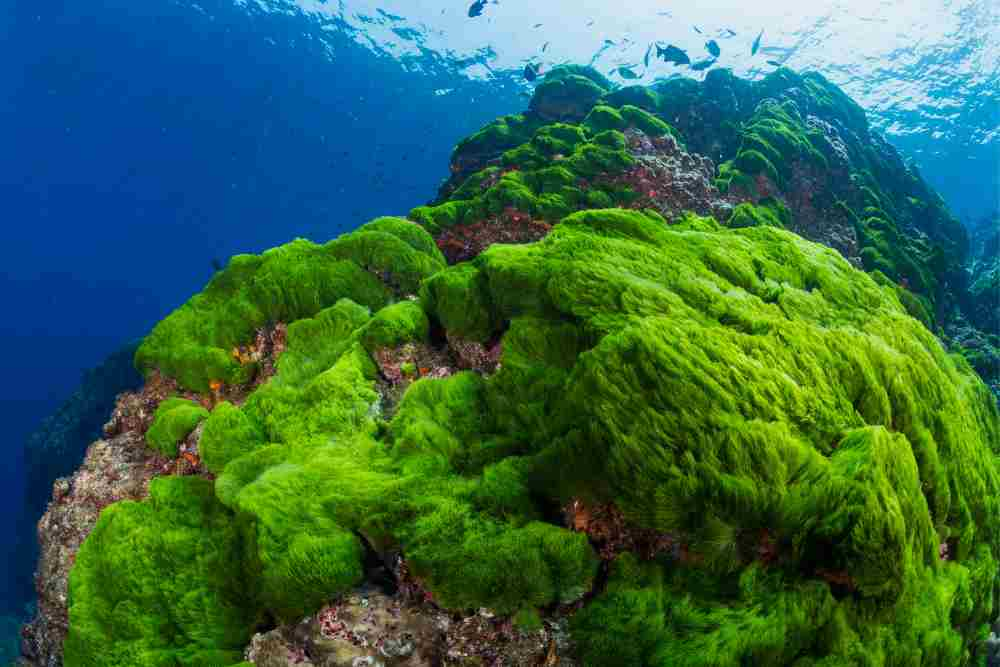
Controlling algae naturally in ponds, lakes, and other water bodies can be achieved using environmentally friendly methods. Here are some natural ways to control algae:
- Shade: Algae thrive in sunlight, so providing shade over the water surface can help reduce their growth. Planting trees or installing floating plants like water lilies can create natural shade.
- Aeration: Installing aeration systems, like fountains or air pumps, helps circulate the water and introduce oxygen. Proper aeration can prevent stagnant water conditions that promote algae growth.
- Barley Straw: Adding barley straw or barley straw extract to the water can release natural compounds that inhibit algae growth. It’s a popular and safe natural algaecide method.
- Beneficial Bacteria: Introducing beneficial bacteria and enzymes can help maintain a balanced ecosystem by consuming nutrients that would otherwise fuel algae growth.
- Aquatic Plants: Adding a variety of aquatic plants to the water can compete with algae for nutrients, thereby reducing their population.
- Reduce Nutrient Input: Minimize the input of nutrients like nitrogen and phosphorus into the water. Avoid excessive use of fertilizers, and manage runoff from lawns or gardens to prevent nutrient-rich water from entering the water body.
- Biological Filters: Installing biological filters in ponds or aquariums can help remove excess nutrients and impurities, which can reduce algae growth.
- Manual Removal: Regularly skim or rake the surface of the water to remove floating algae and prevent them from settling and growing further.
- Keep Water Clean: Properly maintain the water body by removing debris, decaying matter, and excess fish food regularly. This prevents nutrients from accumulating and feeding algae.
- Fish and Predators: Introducing fish species that consume algae, such as certain types of goldfish or grass carp, can help control algae growth. Additionally, natural predators like ducks or turtles can assist in reducing algae populations.
- Rainwater Collection: If you have a rainwater collection system, consider using it for watering plants and gardens instead of introducing nutrient-rich tap water into the water body.
FAQs
Do Algaecides Kill Fish?
Yes, some algaecides can be harmful to fish if not used properly or if overdosed. Copper-based algaecides, in particular, can be toxic to fish and other aquatic life.
It is essential to carefully follow the instructions provided by the manufacturer and avoid using algaecides with fish present in the pool or pond.
Are Algaecides Harmful?
Algaecides can be harmful if not used according to the recommended guidelines. Overuse or misuse of algaecides can lead to chemical imbalances in the water, skin irritation, and harm to aquatic life.
It is crucial to use algaecides in the correct dosage and follow safety precautions to minimize potential risks.
Is Algaecide Toxic to Humans?
Most algaecides, when used as directed, are generally safe for humans. However, some algaecides may contain chemicals that can cause skin or eye irritation if not handled properly. It is essential to avoid direct contact with concentrated algaecides and to follow safety instructions on the product label.
Is Algaecide Harmful to Skin?
Concentrated algaecides can be harmful to the skin and may cause irritation or allergic reactions if direct contact occurs. It is essential to wear protective gloves and clothing when handling algaecides and to avoid getting them on the skin.
Is Algaecide a Sanitizer?
No, algaecides are not sanitizers. While they can help control algae growth, they do not sanitize or disinfect the water. Sanitizers like chlorine or bromine are used to kill bacteria and other pathogens in the pool water.
Is Algae Water Poisonous?
Algae water is not inherently poisonous, but some types of algae can produce toxins that are harmful to humans and animals. Harmful algal blooms can lead to contaminated water with harmful toxins, making it unsafe to drink or swim in.
Is Algae Safe to Touch?
While most types of algae found in swimming pools are not harmful to touch, it is best to avoid direct contact with algae, as it can make surfaces slippery and cause irritation.
Is Algae Safe to Breathe?
Inhalation of algae spores or particles can cause respiratory irritation in some individuals. It is advisable to avoid breathing in algae dust or particles.
Is Algaecide Safe for Aquariums?
Some algaecides are specifically formulated for use in aquariums and are safe for fish and aquatic plants when used as directed. It is crucial to choose an algaecide that is labeled safe for aquarium use and to follow the instructions carefully.
How Do You Neutralize Algaecide?
The best way to neutralize algaecide is to dilute it with water. If you accidentally overdose the pool with algaecide, you can add more water to the pool to reduce the concentration of the chemical. However, prevention is key, so always follow the recommended dosages and guidelines when using algaecides.
Does Algaecide Consume Chlorine?
Algaecides do not consume chlorine. In fact, algaecides and chlorine are often used together in swimming pool maintenance to complement each other in keeping the water clean and algae-free.
References
- Lefler, F. W., Berthold, D. E., Barbosa, M., & Laughinghouse IV, H. D. (2022). The Effects of Algaecides and Herbicides on a Nuisance Microcystis wesenbergii-Dominated Bloom. Water, 14(11), 1739.